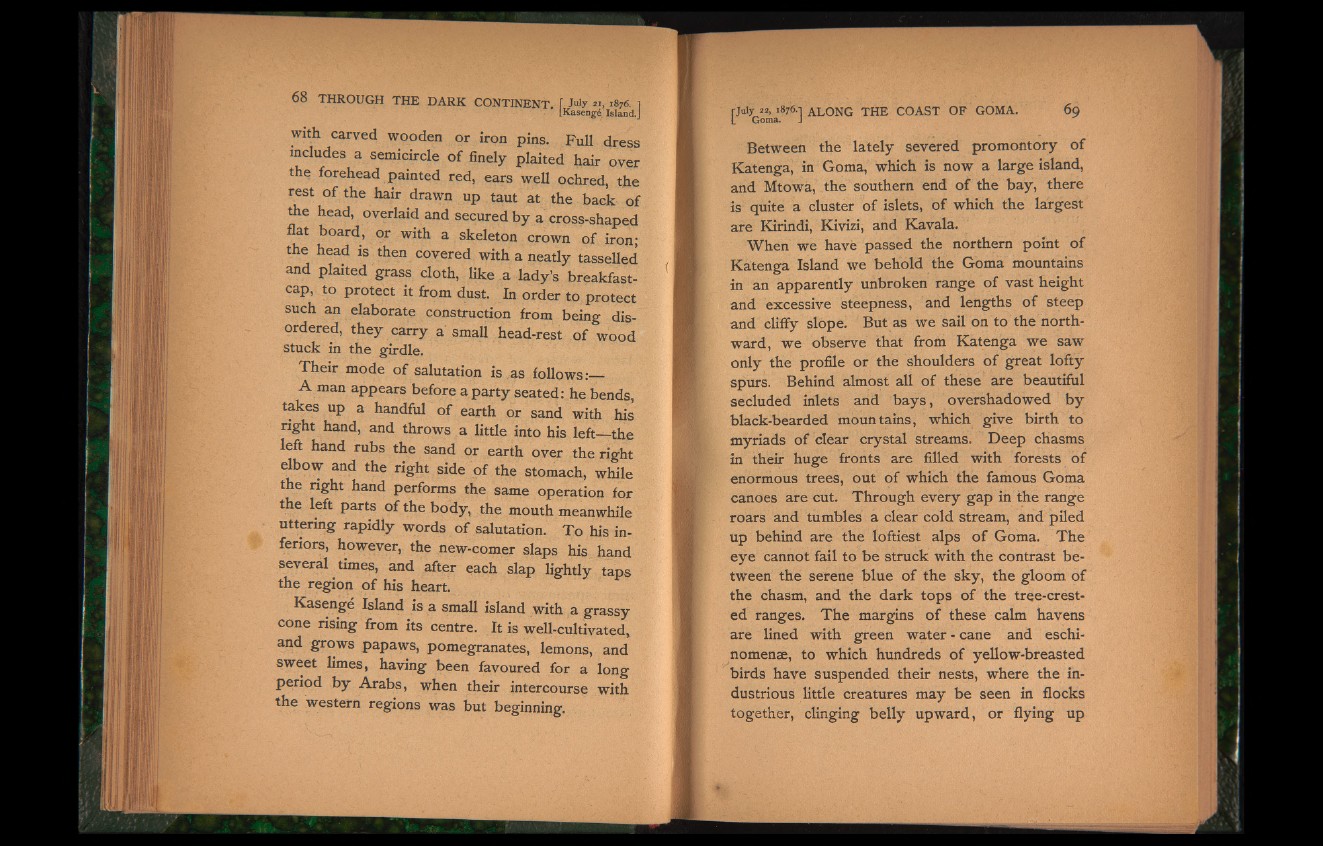
68 THROUGH THE DARK CONTINENT, i J“ly *1.1876. l
|Kaseng6 Island. J
with carved wooden or iron pins. Full dress
includes a semicircle of finely plaited hair over
the forehead painted red, ears well ochred, the
rest of the hair drawn up taut at the back of
the head, overlaid and secured by a cross-shaped
flat board, or with a skeleton crown of iron;
the head is then covered with a neatly tasselled
and plaited grass cloth, like a lady’s breakfast-
cap, to protect it from dust. In order to protect
such an elaborate construction from being disordered,
they carry a small head-rest of wood
stuck in the girdle.
Their mode of salutation is as follows:—
A man appears before a party seated: he bends,
takes up a handful of earth or sand with his
right hand, and throws a little into his left the
left hand rubs the sand or earth over the right
elbow and the right side of the stomach, while
the right hand performs the same operation for
the left parts of the body, the mouth meanwhile
uttering rapidly words of salutation. To his inferiors,
however, the new-comer slaps his hand
several times, and after each slap lightly taps
the region of his heart.
Kasenge Island is a small island with a grassy
cone rising from its centre. It is well-cultivated,
and grows papaws, pomegranates, lemons, and
sweet limes, having been favoured for a long
period by Arabs, when their intercourse with
the western regions was but beginning.
Between the lately severed promontory of
Katenga, in Goma, which is now a large island,
and Mtowa, the southern end of the bay, there
is quite a cluster of islets, of which the largest
are Kirindi, Kivizi, and Kavala.
When we have passed the northern point of
Katenga Island we behold the Goma mountains
in an apparently unbroken range of vast height
and excessive steepness, and lengths of steep
and cliffy slope. But as we sail on to the northward,
we observe that from Katenga we saw
only the profile or the shoulders of great lofty
spurs. Behind almost all of these are beautiful
secluded inlets and bays, overshadowed by
black-bearded mountains, which give birth to
myriads of clear crystal streams. Deep chasms
in their huge fronts are filled with forests of
enormous trees, out of which the famous Goma
canoes are cut. Through every gap in the range
roars and tumbles a clear cold stream, and piled
up behind are the loftiest alps of Goma. The
eye cannot fail to be struck with the contrast between
the serene blue of the sky, the gloom of
the chasm, and the dark tops of the tree-crested
ranges. The margins of these calm havens
are lined with green water - cane and eschi-
nomenae, to which hundreds of yellow-breasted
birds have suspended their nests, where the industrious
little creatures may be seen in flocks
together, clinging belly upward, or flying up